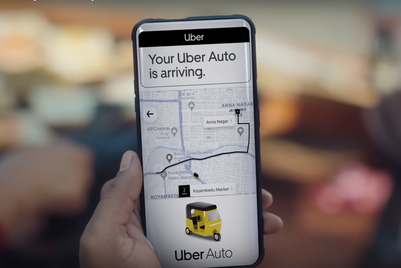
Uber has been a regular magnet for bad press in the US due to its tendentious former CEO Travis Kalanick and other self-inflicted scandals. Then, last week, The Wall Street Journal reported that Uber knowingly rented out defective Honda Vezel cars to drivers in Singapore since 2016, one of whom narrowly escaped unhurt when his vehicle caught fire in January this year.
The number of Singapore riders who found Uber's first brand crisis in Asia to be an issue though, may be less than what many might have predicted.
According to Meltwater data commissioned for this article (see below), the amount of buzz on social media spiked on 4 August, but died down by 7 August. Meltwater saw a lift in traditional media as well, but not with the same velocity. It didn't help that the exposé in Singapore was overshadowed by constant updates from Uber's home base in the US as it continues its hunt for a CEO who isn't Travis Kalanick.
Explaining Singapore's muted response, Lena Soh-Ng, senior partner at Huntington Communications said, from a crisis-level POV, "nobody was hurt, that’s why".

Judging from the trending keywords associated with Uber on Singapore's social media platforms over the past week, themes surrounding the brand and "unsafe cars" are indeed mentioned, in this summary by Meltwater. But Amazon took some attention away, possibly distracting consumers with how the company's highly-anticipated launch in Singapore sees it using Uber to fulfil the orders for its Prime Now two-hour delivery service.
By Monday, Ewan Ross, area director for Greater China at Meltwater noticed that the themes on social media had changed to a more proactive tone acknowledging that Uber is taking action.
"As far as safety goes, there should not be a price tagged to human life. $1.4 million should not be an issue. Even if it needs 10 million dollars to ensure safety, then that’s what a company must spend," said Soh-Ng. "I would have given more assurance about how Uber cares for driver and passenger safety".
Uber's official response
The official full statement from Uber obtained by Campaign includes some contriteness and details about preventative measures:
“As soon as we learned of a Honda Vezel from the Lion City Rental fleet catching fire, we took swift action to fix the problem, in close coordination with Singapore’s Land Transport Authority as well as technical experts. But we acknowledge we could have done more—and we have done so. We’ve introduced robust protocols and hired three dedicated experts in-house at LCR whose sole job is to ensure we are fully responsive to safety recalls. Since the beginning of the year, we’ve proactively responded to six vehicle recalls and will continue to do so to protect the safety of everyone who uses Uber.”
But Uber declined to provide a statement specific to Campaign's queries about reputational implications.
Beyond the statement, there doesn’t seem to be any direct-to-customer engagements by the company, added Blue Totem's Wong.
From an operational point of view, this may be a right tactical move, but from a trust and reputational perspective, Wong said that Uber could have been more proactive in reaching out to its customers and acknowledging its shortcomings. "For example, it would have been nice to receive a note via email or in-app as a customer, and perhaps it would help assuage any worries people have if they see a Honda Vezel pull up when they next hail a ride," he said.
The revelations of the faulty yet leased Honda Vezels are unlikely to have a substantial impact on Uber's business in Singapore, predicted Wong, but it "contributes to the larger narrative that it is a company that does not care for its stakeholders beyond their transactional value".
"Transactional businesses can do very well as evident by Uber's estimated valuation, but they lack the brand love and loyalty which builds a moat against competition and changing trends," he said.
In an earlier interview before this crisis erupted with Renaud Besnard, regional marketing director of Asia-Pacific, who joined Uber in 2016, he stated he wants to build Uber into a brand that is "large but also adorable; we might be big but we need to be loved,” he explained, given the rocky course of Uber’s brand history.
Besnard also references the various controversies that have struck the company in the West as “exogenous factors”. “I currently focus on delivering value both emotionally and practically to consumers, and I try to concentrate on things that can make a point of influence,” he told Campaign. He did not address the Honda incident in Singapore directly after it happened.
And yes, noise on social media died down, but people will remember, said Soh-Ng.
Campaign's online editor Matthew Miller contributed reporting to this article.







.png&h=334&w=500&q=100&v=20250320&c=1)

.jpg&h=334&w=500&q=100&v=20250320&c=1)
.jpg&h=334&w=500&q=100&v=20250320&c=1)









_3.jpg&h=268&w=401&q=100&v=20250320&c=1)